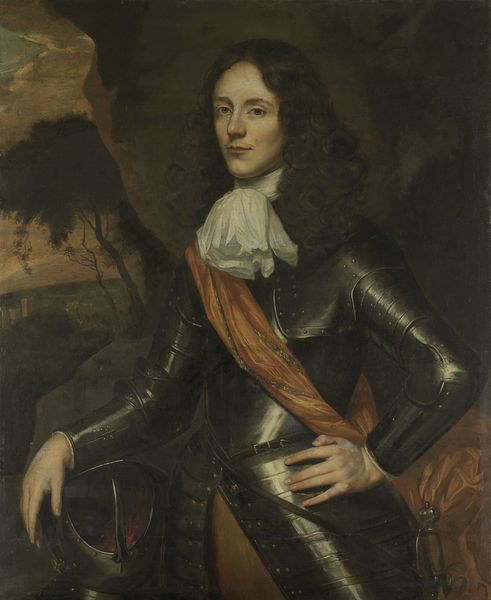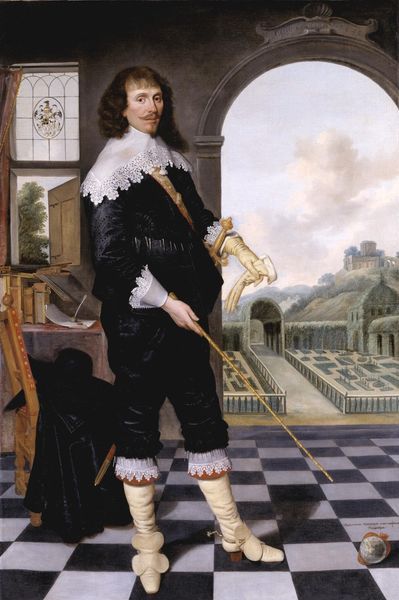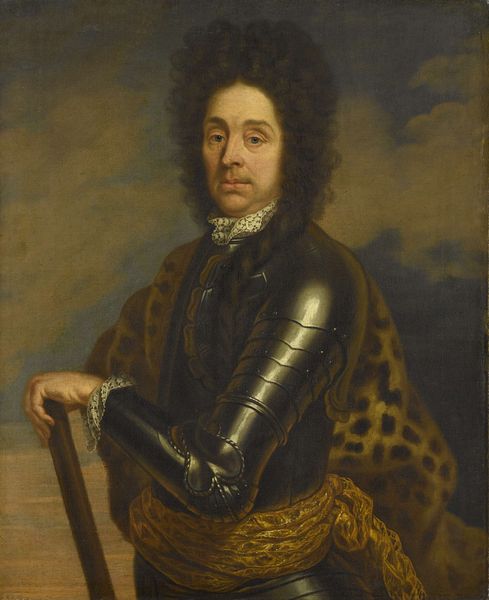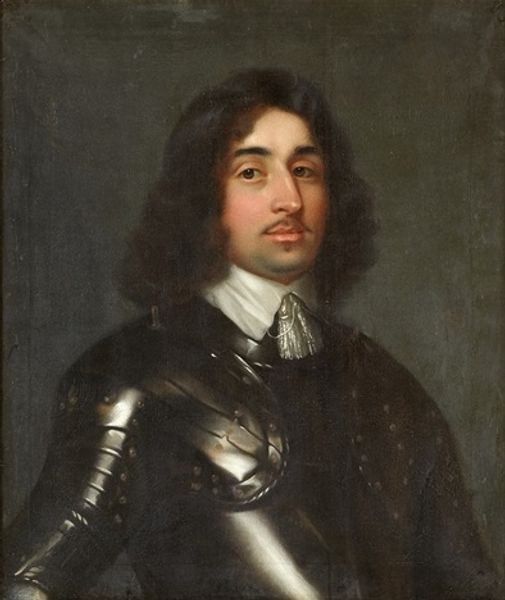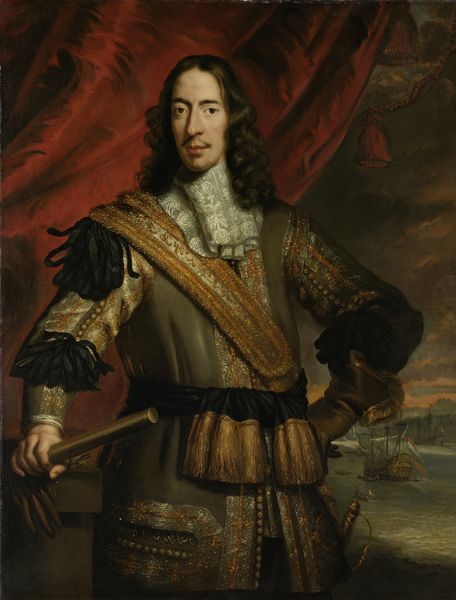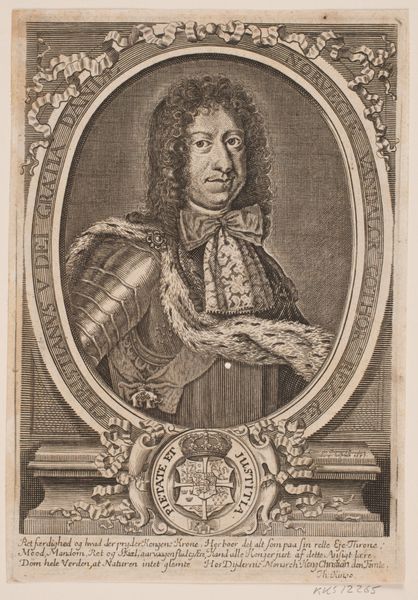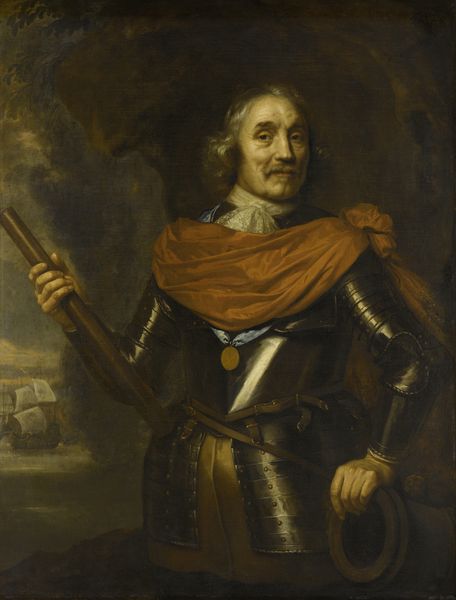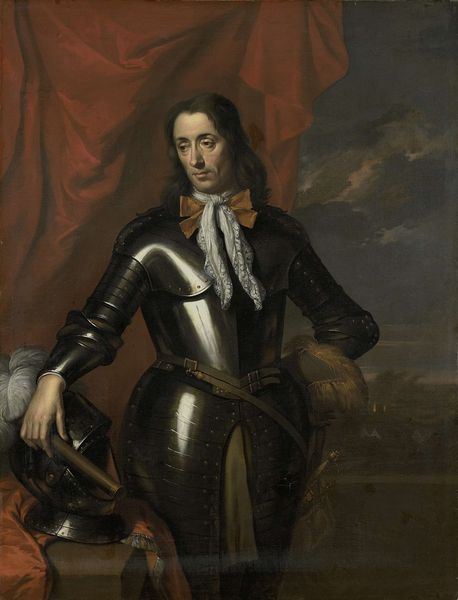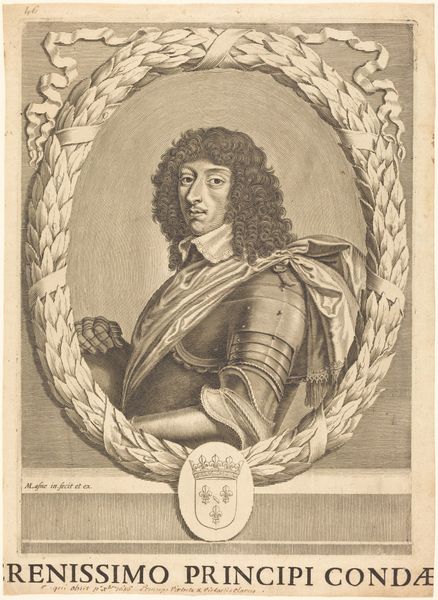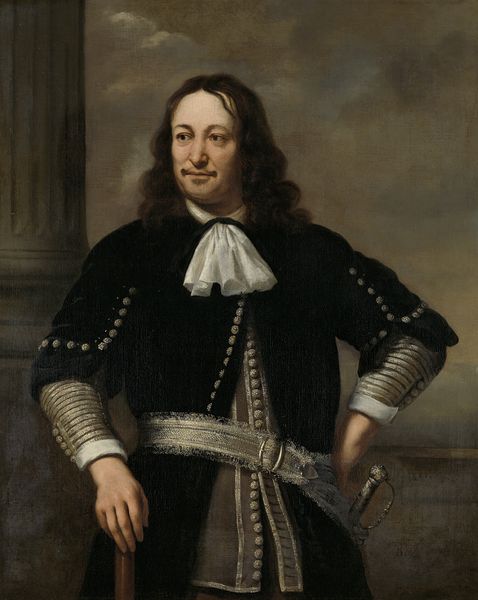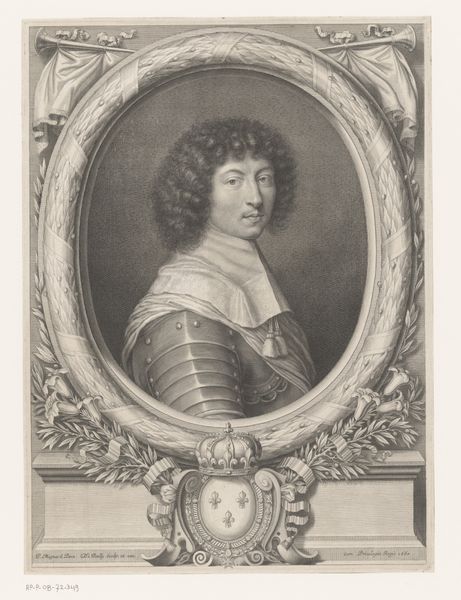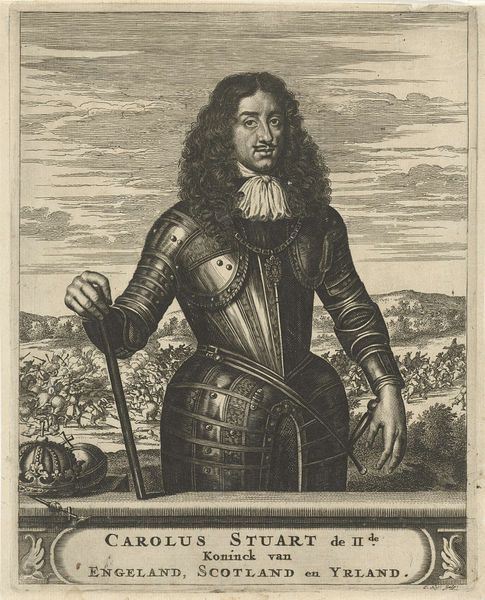
painting, oil-paint
#
portrait
#
narrative-art
#
baroque
#
dutch-golden-age
#
painting
#
oil-paint
#
figuration
#
genre-painting
#
history-painting
Dimensions: length 128.3 cm, width 102.0 cm
Copyright: Rijks Museum: Open Domain
Curator: Daniel Vertangen, circa 1660, gives us "Portrait of Jan Valckenburgh and an Enslaved Servant," executed in oil paint. A striking composition, wouldn't you agree? Editor: It's undeniably...stark. The palette is mostly subdued, blacks and grays dominating, and yet, that rich, deep red curtain behind Valckenburgh creates a really intense focal point. Curator: Yes, that contrast is key. Vertangen uses the visual language of Baroque portraiture to, quite literally, frame Valckenburgh's power and status. Note how the crisp linen at his throat mirrors the billowing clouds outside the window. Editor: But at the expense of… everything else. The young servant's face is almost swallowed by the darkness. This placement, right behind Valckenburgh's shoulder, reinforces an already unsettling dynamic of power and possession, typical of these Dutch Golden Age portraits that attempt to reflect a very warped worldview. Curator: The composition certainly directs our gaze. Look at how Valckenburgh's armor gleams—each plate meticulously rendered to convey strength and wealth. And observe how the enslaved boy bears the weight of a helmet—his humanity, reduced to serving as an object upon which wealth rests. Editor: And not just any wealth—colonial wealth. This portrait doesn't just depict an individual; it embodies the socio-political climate of the time. The Dutch Golden Age was, in reality, the Age of Exploitation. Valckenburgh was the Director-General of the Dutch trading post in Elmina, now Ghana. His status and authority relied entirely on a ruthless enterprise of colonial exploitation. Curator: I would add that Vertangen uses formal elements such as color, light and proximity to make certain assertions about 17th-century values. By presenting Valckenburgh like this, as powerful and in control of the visual field, the artist gives us a glimpse into the hierarchy of being and race in that particular society. Editor: It is a disquieting visual document that compels us to consider the legacies of colonialism as Vertangen uses aesthetic techniques to make political statements about power, race, and representation. Curator: Indeed, this painting reveals to us more than one subject in its intricate layers. Editor: It's a mirror reflecting back an image that’s impossible to ignore.
Comments
rijksmuseum about 2 years ago
⋮
Jan Valckenburgh, portrayed in full regalia wearing armour and holding a commander’s baton, was twice director-general of Elmina on the African Gold Coast. The enslaved man wears a gold medal with a view of Fort Elmina, which is also depicted in the background. Valckenburgh received the medal from the Dutch West India Company for services rendered. The gold and the African man symbolize the merchandise traded on the Gold Coast.
Join the conversation
Join millions of artists and users on Artera today and experience the ultimate creative platform.
